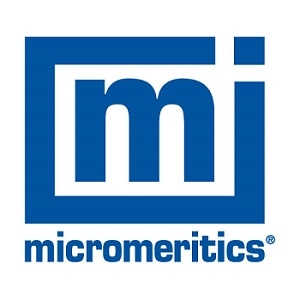The Brønstead acidity of catalysts such as zeolites influences reaction kinetics, and is therefore of keen interest. Consequently, characterization of acid sites is crucial and is often conducted according to the ASTM D 4824 ammonia chemisorption method.
An alternative, but comparable, method for acid site characterization involves pulse chemisorption of propylamines, subsequent temperature-programmed desorption (TPD), and a mass spectrometry analysis of propylene (Figure 1). The AutoChem analyzer, equipped with the vapor generator accessories and mass spectrometer, can be used to conduct a complete characterization analysis.
Materials
In this application, the zeolite sample was used that contained hydrogen cations with a silica-to-alumina ratio of 75:1. Propylamine (> 99.0% GC) and isopropylamine (> 99.5% GC) were used separately as reagents. For calibration purposes, propylene (> 99%) was used.
Preparation
Various cations, including hydrogen and ammonium can be present in a Beta zeolite sample. Conversion of cations in these compounds into hydrogen cations can be achieved with a temperature ramp. To activate the sample, it was heated to 500 °C at a rate of 10 °C/minute in an inert helium environment. It was then cooled down to 200 °C, which was the analysis temperature.
.jpg)
Figure 1. The amine reacts with acid sites to decompose into propylene and ammonia via a mechanism analogous to Hofmann Elimination.
Analysis
Once the Beta zeolite was activated, pulse chemisorption was carried out by dosing 10 injections of propylamine vapor onto the sample (to ensure the saturation of the sample) by passing an inert gas (here it was helium) through a 5-cm3 loop. The final step was a temperature-programmed desorption (TPD), where the gas to be detected (propylene) was scanned using the mass spectrometer. Data was collected during a temperature ramp between 200 °C and 500 °C.
Data
Quantitative data can be obtained by calibrating the mass spectrometer by injecting a known volume (Vcal) of the product of interest (propylene) through the septum using a high-precision syringe. Using the AutoChem peak-editing software, the mass spectrometer signal’s peak area can be obtained.
The calibration accuracy can be increased by making injections until peaks are similar in area. A general conversion factor between the actual gas volume and mass spectrometer peak area can be obtained by averaging the areas. Using this value, the acidity of zeolites can be calculated. An example of this procedure is shown in Figure 2.
.jpg)
Figure 2. Example of mass spectrometer signal during an area-volume calibration.
Also, Figures 3 and 4 illustrate that a thermal conductivity detection technique includes residual ammonia and amine from the chemisorption, while the mass spectrometer detection separates the propylene signal, enabling the calculation of acid site concentration.
.jpg)
Figure 3. Thermal conductivity data from the AutoChem.
.jpg)
Figure 4. Mass spectrometer peak results.
Once the peak area is obtained by integrating the propylene signal from Figure 4, Apms, the concentration of the acid sites (Nas) can be estimated using the following equation:
.jpg)
Nas isopropylamine = 999.57 µmoles/g
Nas propylamine = 907.23 µmoles/g

This information has been sourced, reviewed and adapted from materials provided by Micromeritics Instrument Corporation.
For more information on this source, please visit Micromeritics Instrument Corporation.